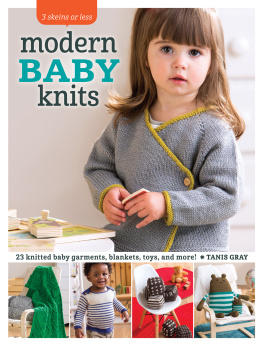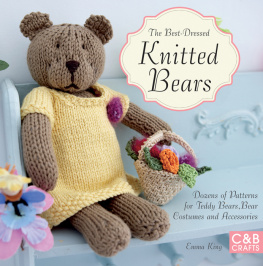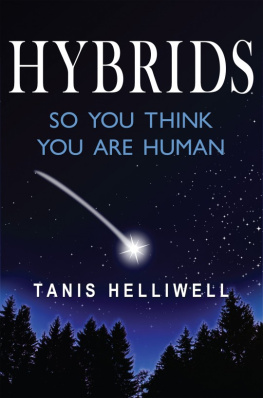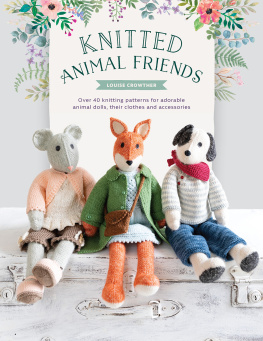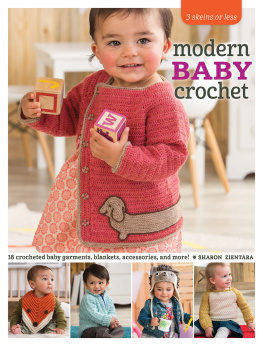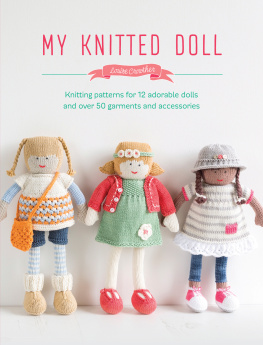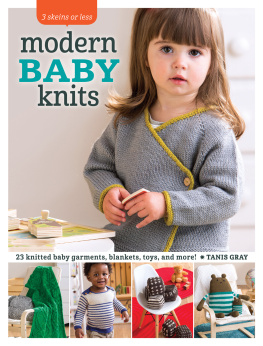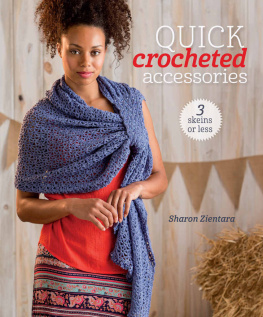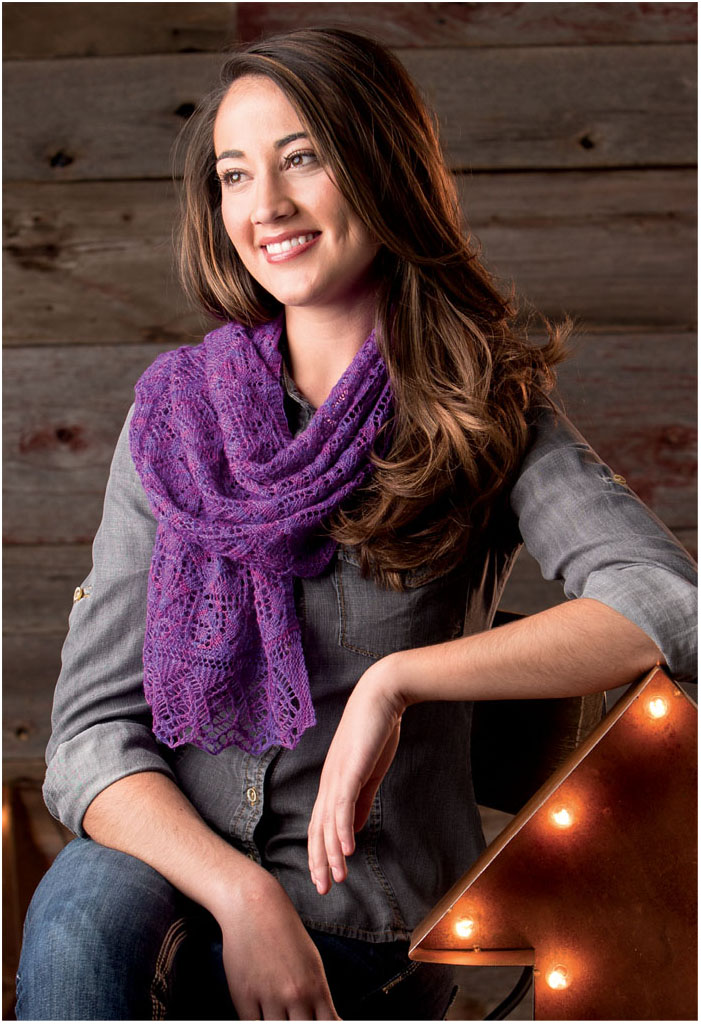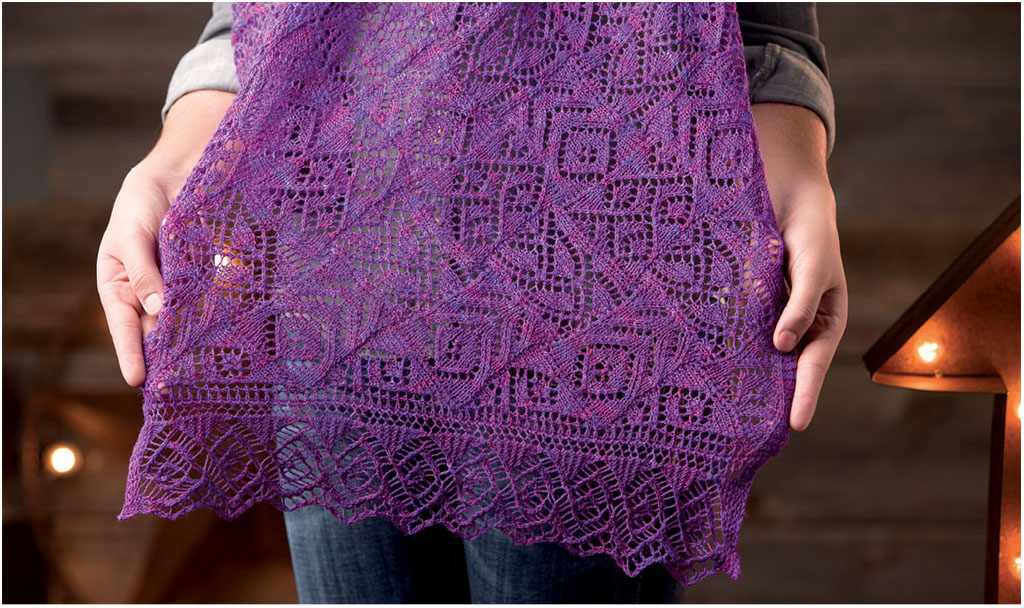Tanis Gray

For Debbie Marchetti. Knit on in heaven, dear friend.
Many thanks to Associate Art Director Julia Boyles, who did the amazing shoot, Charlene Tiedemann and Brenda Gallagher who put it all together, tech editor Alexandra Virgiel, my wonderful and constant Editor Erica Smith, and classy Editorial Director Allison Korleski. You're all outstanding to work with.
CONTENTS
Heather Zoppetti
Ann Weaver
Glenna Harris
Susan B. Anderson
sa Tricosa
Joan Forgione
Faina Goberstein
Melissa Goodale
Kirsten Kapur
Carina Spencer
Sauniell Connally
Kelly Herdrich
Mindy Wilkes
Cirilia Rose
Erica Schlueter
Susanna IC
Carrie Sullivan
Thea Colman
Romi Hill
Tanis Gray
Melissa LaBarre
Judy Marples
Margaux Hufnagel
Marjan Hammink
Carol J. Sulcoski
Introduction
As knitters, we can do a lot with one, two, or even three balls of yarn. A pair of socks or stunning lace shawl out of a singular, stunning hank of yarn? No problem! A sweater out of three skeins? Bring it on! Crafters are curious by nature, and I often challenge myself to knit something with limited yardage.
The process of knitting is magical. We take needles and yarn and create something functional and beautiful. We get to wear what we create with the added bonus of it keeping us warm, making us feel creative, and giving us the satisfaction of stating, when complimented on our hand-knits, Thanks. I made it and only used one ball of yarn!
I have found in talking to other knitters that we all love small manageable projects. We live in a fast-paced world, commuting on trains and buses, flying across the world, watching our children at team practice, going to the movies, waiting in the doctors office, and every now and then getting a quiet moment to sit with our knitting and become one with the fiber and smooth needles clicking away. Small projects are ideal for our hectic lives, but small certainly does not equal boring.
I challenged a group of designers to come up with something grand using just one, two, or three hanks of yarn, and they happily stepped up to the plate. Need a lace fix? Knit up Romi Hills gorgeous beaded lace shawl or Judy Marpless asymmetrical triangle. Going on vacation somewhere warm? Knit up Sauniell Connallys elegant lace cami or bring it with you on the plane. Need some new socks? Try Glenna Harriss twisted cabled pair or satiate your Latvian Braid craving with Ann Weavers wristers. Everything in this collection is designed to be portable, so you can knit wherever you may be, and you wont break the bank.
I hope you enjoy the following designs by modern busy knitters. Knitting with only one, two, or three hanks of yarn? Mission accomplished!
Tanis Gray
Interessere Stole
Heather Zoppetti
Entrelac and lace come together in this intricate stole. Three different lace patterns are woven together throughout the body, while a graceful lace edging adorns the top and bottom.
Finished Size
About 55" (139.5 cm) long and 16" (40.5 cm) wide.
Yarn
Lace weight (#1 Super Fine)
Shown here: Tanis Fiber Arts Pink Label Lace Weight (100% superwash merino; 1000 yd [914 m]/115 g): jewel, 1 hank.
Needles
U.S. size 3 (3.25 mm): 24" (60 cm) circular (cir).
Adjust needle size if necessary to obtain the correct gauge.
Notions
Waste yarn; U.S. size G (4 mm) crochet hook; markers (m); tapestry needle.
Gauge
17 sts = 212" (6.5 cm) and 34 rows = 314" (8.5 cm) in Grace, Flower, and Leaf charts.
Notes
- Stole is worked using the entrelac technique. The short ends are trimmed with knitted-on borders. A circular needle is used for ease of working.
- This pattern uses three lace charts, one per tier. The sample uses the charts in the following order: grace, leaf, flower (see ). The instructions give the basic pattern without specifying which chart to work on a given tier. For base and side triangles, the chart should be worked as best possible, making sure to match each yarnover to its corresponding decrease. If this is not possible, work the extra stitch(es) in stockinette.
Stole
Using the crochet-chain provisional method (see ), CO 78 sts. Do not join.
Set-up row: (WS) K5, place marker (pm), purl to last 5 sts, pm, k5.
Base Triangles
First triangle:
Row 1: (RS) K5, sl m, work 1 st foll chart (see ), turn.
Row 2: Work 1 st, turn.
Rows 34: Work 2 sts, turn.
Rows 56: Work 3 sts, turn.
Rows 78: Work 4 sts, turn.
Rows 910: Work 5 sts, turn.
Rows 1112: Work 6 sts, turn.
Rows 1314: Work 7 sts, turn.
Rows 1516: Work 8 sts, turn.
Rows 1718: Work 9 sts, turn.
Rows 1920: Work 10 sts, turn.
Rows 2122: Work 11 sts, turn.
Rows 2324: Work 12 sts, turn.
Rows 2526: Work 13 sts, turn.
Rows 2728: Work 14 sts, turn.
Rows 2930: Work 15 sts, turn.
Rows 3132: Work 16 sts, turn.
Row 33: Work 17 sts, do not turn.


